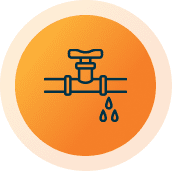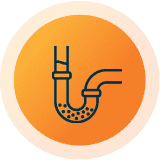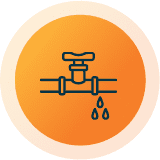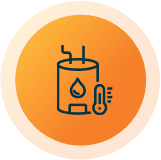Serving central Maryland & eastern shore
Sewer Lines and Excavation
Like most appliances and systems in our homes, sewer lines eventually require replacements. But unlike most other things, these lines need immediate attention. Any delays can result in extensive damage or health hazards.
Need plumbing in Anne Arundel or Howard County, Maryland?
Need plumbing in Anne Arundel or Howard County, Maryland?
Call Staton Heating, Cooling & Plumbing where we provide a range of sewer line repair methods, including pipe bursting and pipelining. Get in contact with us today, and we’ll help you determine the right excavation method for your sewer line repair.
Exposure to sewer gas may cause side effects like nausea, headaches, dizziness, and impaired cognitive abilities. Not to mention, it smells like rotten eggs! You’ll need a repair ASAP. Several strategies are used to repair sewer lines, each with its own strengths and weaknesses.
External Excavation
This traditional method of sewer pipe repair is tried and true; it’s been around for years and continues to be used in excavations.
With an external sewer line excavation, workers must dig trenches and tunnels to access the sewer line. This will expose the pipe completely so that it’s easier to repair or replace. However, it often causes damage to the surrounding land and structures.
Interior Access Excavation
Rather than digging up a large section of the yard, this method involves precise excavation where the damage is. It’s a way to repair sewer lines without digging large trenches.
Even though trenchless sewer line excavation methods can be costly, you won’t need to spend money repairing landscape damage once it’s done. However, it’s not always possible to use this technique; if the lines are damaged too extensively, pipe bursting may not be viable.
Reasons for Digging Up Sewer Lines
No one wants to have their lawn excavated—but if your sewer line needs repairs, it may be necessary. Here are a few common reasons why excavations are performed:
- The existing line is damaged. Oftentimes, this is due to tree roots. Damage to your sewer line can also be caused by oil, grease, and flushing things other than toilet paper. Avoid costly repairs by scheduling routine maintenance, like drain cleaning services.
- You’re updating your septic system. Switching from a traditional septic tank to the city sewer system? You might choose to do this if your septic tank needs repairs, or if a new city bylaw requires it. If so, you’ll need a new sewer line to make the change.
- Doesn’t need extra space – as the whole-house air purifier goes into the HVAC system itself, it won’t take up any space as many of the individual purifiers do.
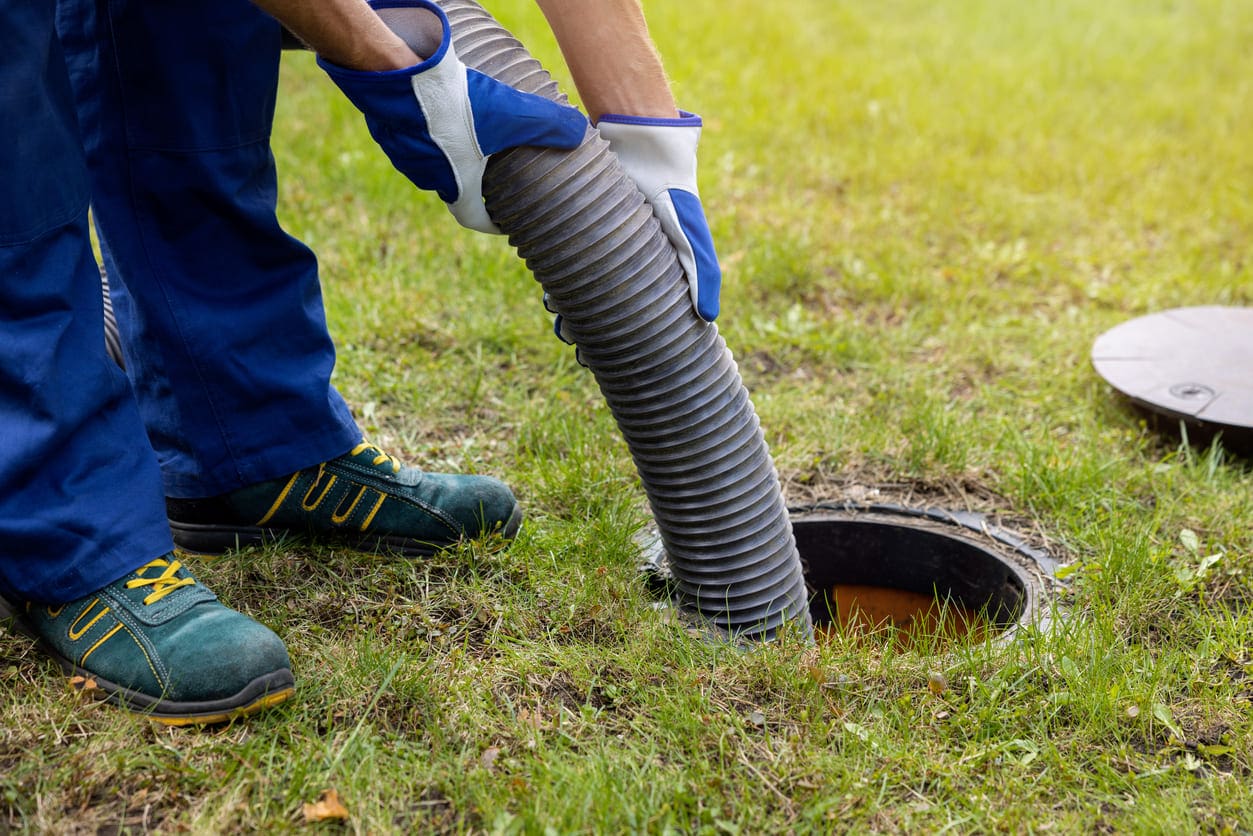
Sewer Line Excavation Process
Before the real work begins, excavators start by marking all utility lines. Accidentally hitting a utility line may cause a service outage in your area and cause serious injuries to those nearby—in some cases, it may even result in death. Careful and precise planning is key to a successful sewer line repair.
Next, the workers will use video inspection technology to assess the condition of your pipes. It allows them to get a closer look at what’s happening within the line. Based on this information, they can select a strategy that’s optimal for your property and pipes. The plumbers may need to obtain permits or other inspections to proceed with the repair.
The specific plumbing excavation process varies depending on the methods that are used. We’re going to detail a few of them here:
Pipe Bursting vs. Open-Top Excavation
Which repair method is best for your property: trench or trenchless sewer repair? There are pros and cons to each:
Pipe Bursting
Some homeowners are hesitant to repair sewer lines because they don’t want trenches dug into their yards—it fixes their sewer line, but it ruins their lawn! One of the main advantages of pipe bursting is that it won’t require any trenches to be dug.
To remove old and broken pipes, we used a pneumatic or hydraulic head. We remove the old damaged pipe and replace it with a new one that’s perfectly sized to fit in that space.
If you’re interested in trenchless sewer line repair in Anne Arundel or Howard County, we also offer pipelining (also known as cured-in-place piping). With this method, your existing pipes are relined with epoxy. This saves you the trouble of removing the old pipes; once they’re relined, they’ll work as efficiently as if they were a new sewer line.
These repair methods have only been around for the last two decades, making them relatively recent. The lack of digging minimizes costs, both in terms of labor and what you’d spend to fix your property afterward.
Open-Top Excavation
In cases where a trenchless sewer line repair isn’t viable, there is an alternative method:
An open-top sewer line excavation is time-consuming and labor-intensive, but it ensures that your sewer line is completely repaired. Holes must be dug on either side of the pipe and around it, too. As you can imagine, this means a large portion of your yard must be dug up.
Once the pipes are unearthed, the repairs can begin. Whether the pipe requires a total replacement or just an adjustment, the workers will have easy access to the sewer line.
An open-top excavation tends to be more affordable than a trenchless repair. It’s a reliable way to repair a faulty sewer line or replace it with an entirely new pipe. That being said, this method has its disadvantages—namely, the time it takes to complete, and the expense associated with repairing your yard.
At some point or another, most home and business owners deal with a damaged sewer line. A prompt replacement is the key to minimizing damage or exposure to any hazards. We also offer expert sewer backups repair, drain cleaning, and water heater repair to keep your home’s plumbing in excellent condition. Wondering which of these repair methods are best for your property? We can help!
$100 OFF
Emergency Drain Clean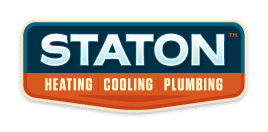
Get in Touch With Our Team
REAL REVIEWS FROM REAL CLIENTS
4.9 Google Rating











